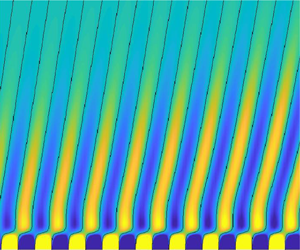Article contents
Dense-gas effects on compressible boundary-layer stability
Published online by Cambridge University Press: 22 April 2020
Abstract

A study of dense-gas effects on the stability of compressible boundary-layer flows is conducted. From the laminar similarity solution, the temperature variations are small due to the high specific heat of dense gases, leading to velocity profiles close to the incompressible ones. Concurrently, the complex thermodynamic properties of dense gases can lead to unconventional compressibility effects. In the subsonic regime, the Tollmien–Schlichting viscous mode is attenuated by compressibility effects and becomes preferentially skewed in line with the results based on the ideal-gas assumption. However, the absence of a generalized inflection point precludes the sustainability of the first mode by inviscid mechanisms. On the contrary, the viscous mode can be completely stable at supersonic speeds. At very high speeds, we have found instances of radiating supersonic instabilities with substantial amplification rates, i.e. waves that travel supersonically relative to the free-stream velocity. This acoustic mode has qualitatively similar features for various thermodynamic conditions and for different working fluids. This shows that the leading parameters governing the boundary-layer behaviour for the dense gas are the constant-pressure specific heat and, to a minor extent, the density-dependent viscosity. A satisfactory scaling of the mode characteristics is found to be proportional to the height of the layer near the wall that acts as a waveguide where acoustic waves may become trapped. This means that the supersonic mode has the same nature as Mack’s modes, even if its frequency for maximal amplification is greater. Direct numerical simulation accurately reproduces the development of the supersonic mode and emphasizes the radiation of the instability waves.
- Type
- JFM Papers
- Information
- Copyright
- © The Author(s), 2020. Published by Cambridge University Press
References
- 17
- Cited by


